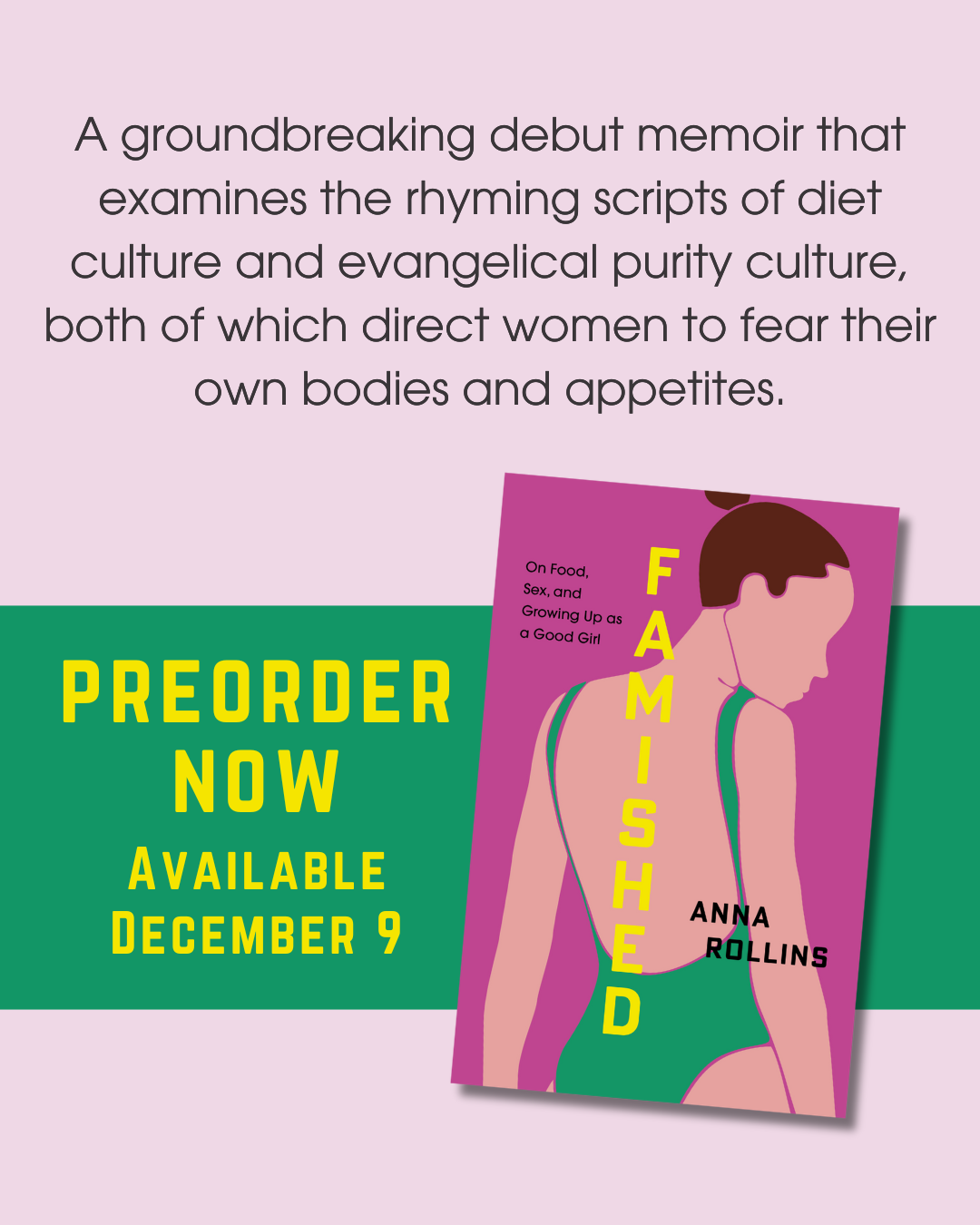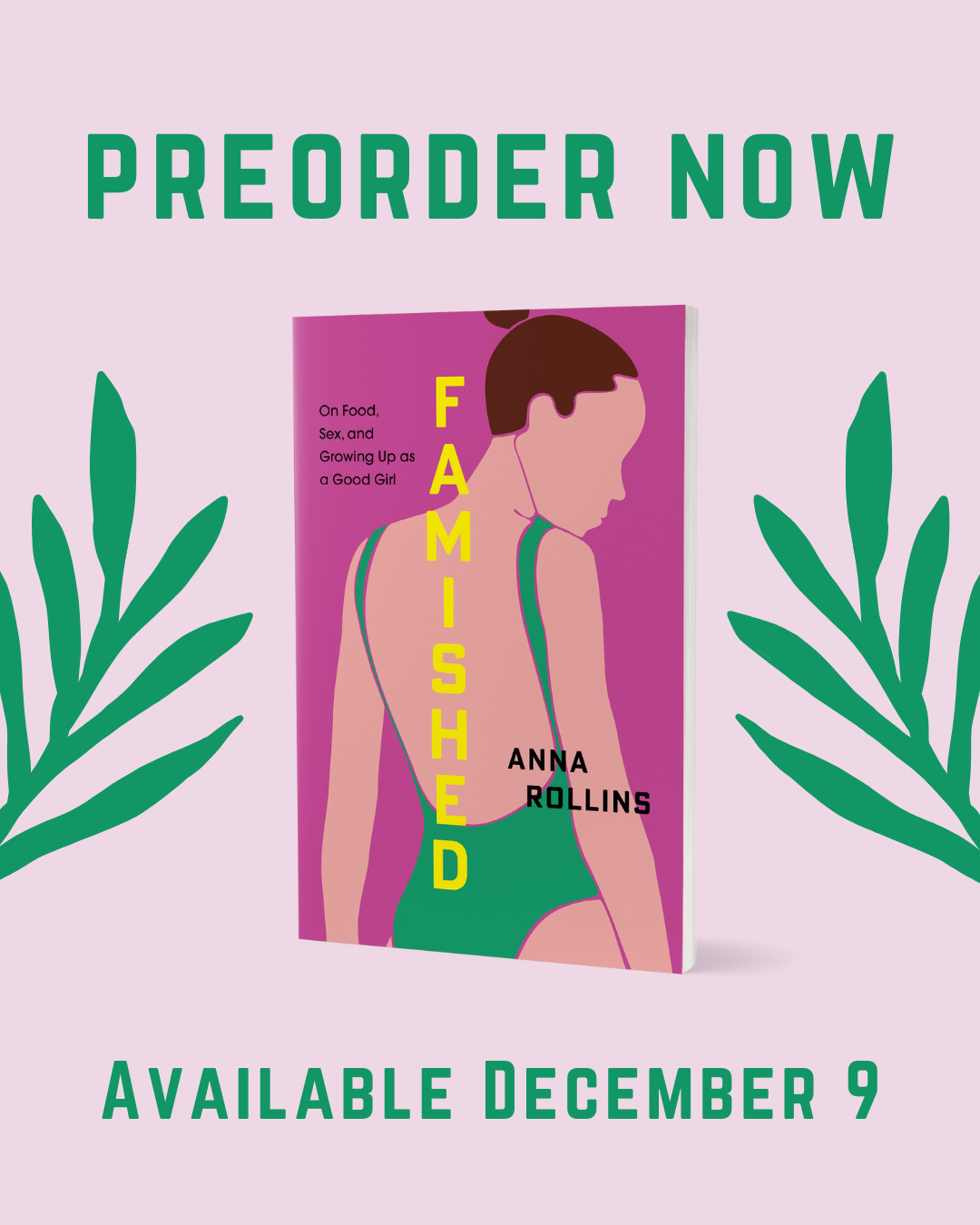Not a vanilla transformation story
On craft essays and not wanting to write a(nother) boring testimony
Coming December 9, 2025 & available for PREORDER now!
I’m going to tell you how a cut scene from my book, Famished: On Food, Sex, and Growing Up as a Good Girl, was re-purposed in a craft essay.
One scene I’d written for my book was how much I struggled to write my religious testimony in Sunday School during elementary school. My struggle was, in part, because a nine-year-old does not usually have a good transformation story.
My Sunday School teacher always assured us that, when it came to religious testimonies, boring was okay — great, even. Who wouldn’t want to bypass struggle in their own personal conversion experience?
Still — even as an elementary schooler, I liked interesting stories. What was the point of telling someone a narrative where nothing happens? Telling a vanilla story felt like a waste of my time and the listener’s.
This, I realize looking back, was a writer’s problem. Only someone who valued storytelling could feel such an existential crisis when they were being asked to tell a boring one. Good stories have tension, conflict, plot. Something changes. A testimony where someone says, I was told to believe in Jesus when I was little — and now I still do, is stale and uninspiring.
What, after all, could a good little girl really be saved from?
I’d cut this scene about testimony writing from my book because it meandered from the point.
But as I was thinking about this cut scene, I was also getting ready to teach a creative writing workshop to prospective high school students on my university’s campus. The theme for the workshop was “the personal essay,” and I had forty-five minutes to sell the genre (and our program) to a dozen or so teenagers.
I decided to teach the stages of the personal essay in the same way I was taught to write the various components of a religious testimony — because, really, the two genres were the same. In Sunday School, I was being asked to write a short personal essay, whether I was aware of it or not.
We’re all fascinated by stories with transformation.
For better or worse, this is why before and after images of fitness journeys, or baby bumps, or home renovations, get so much engagement. We want to see change — in part because difference is stimulating. But also because our day-to-day lives are just pretty boring. Full, chaotic, stressful, yes — but also, boring. The bills are boring, the laundry is boring. The diapering and the doctor’s appointments. The sky is falling meetings, the inbox filled with permission slips and recommendation requests.
So very boring.
So we turn to transformation narratives to escape our stupid, boring lives. To entertain the fantasy that something could change. And most of us like to envision that with that change, there might be some hope.
The genre of the testimony is all about change:
I once was lost, but now I’m found.
I once was blind, but now I see.
I once was fat, but now I’m thin.
You get the idea.
A testimony has three parts: the before, the intervention, and the after. As far as structures go, it’s not a complicated one. Maybe it even feels a bit reductive. Maybe its simplicity makes you long for more. That’s okay. A writer can build off of that. But it’s a good place for a beginner to start.

A personal essay can never just be THIS THING HAPPENED TO ME. That’s not an essay; that’s an anecdote.
A personal essay can be I used to be X way, but then THIS THING HAPPENED TO ME, and now I’m another way.
This is what I explained to my students in the workshop. I wrote this three-part formula on the board. I showed a model of an essay that imposes a three-part structure.
Interested in finding examples of these? Go to the personal essay sections of popular websites like HuffPost or the TODAY Show. This is usually the formula. You can often see it in the headline. If you’re reading personal essays in literary journals, though, the structure is going to get much more complicated.
I asked the students to do some brainstorming and freewriting, and then, if they felt comfortable, to share. One or two brave teenagers raised their hands and shared stories that I imagine they’ll be wrestling with their whole lives.
When I went back to my office, I was pleased with the session. And then I thought — what if I spliced my teaching notes with my own personal narrative about testimonies and turned it into a craft essay?
A craft essay is … exactly what my Substack is. Typically, it combines personal narrative to explain the literary and rhetorical decisions you make in a piece of creative writing. Craft essays are written for writers or editors. Someone reading it isn’t interested in your specific content; they read it so that they can apply your techniques to their own creative work.
There are several places online that publish work like this. LitHub is one that comes to mind. And Brevity Blog, an outlet with more than 50,000 email subscribers is another (see submission guidelines here).
As you’ll see from the submission guidelines, they ask for a full draft. I sent that draft, but here’s the pitch I sent along with it:
Dear Allison Williams,
I am so grateful for all the work you do in X Facebook group and with The Writers' Bridge.
I hope you will consider my attached essay "Trying (and failing) to write my Sunday School testimony prepared me to pitch personal essays" (907 words) for Brevity Blog. In this essay, I detail how writing dissatisfying religious testimonies as a child laid the groundwork for a successful personal essay pitch to NBCNews.
My work has appeared in XXX.
You’ll see that my three-part formula is even in my pitch: I used to write crappy religious testimonies as a kid and it made me frustrated BUT THAT PRACTICE WASN’T IN VAIN BECAUSE eventually I wrote a good one that got published somewhere big!
Publishing in Brevity’s blog was such a great experience. I received a significant amount of reader engagement (in the form of personal emails, PR pitches, and newsletter subscribers). Their readership is dedicated, and in many ways, I often feel like my work impacts more people when it’s published there, than it does when I publish work in national outlets that may seem “bigger.”
Here’s the final product: Sunday School Taught Me to Pitch Personal Essays | The Brevity Blog
Thanks for reading!
Do you have any cut scenes that you think could be re-purposed for another genre of writing?
Where’s your favorite place to read craft essays?
Tell me in the comments! I appreciate you being here.







Love this! I am also a big fan of memoir scraps as essay fodder...I like how it landed as a craft essay instead of a personal essay though - nice twist.
Always love your writing and submission advice, Anna! Enjoyed your Brevity piece and the vivid detail of you roller skating in the basement.